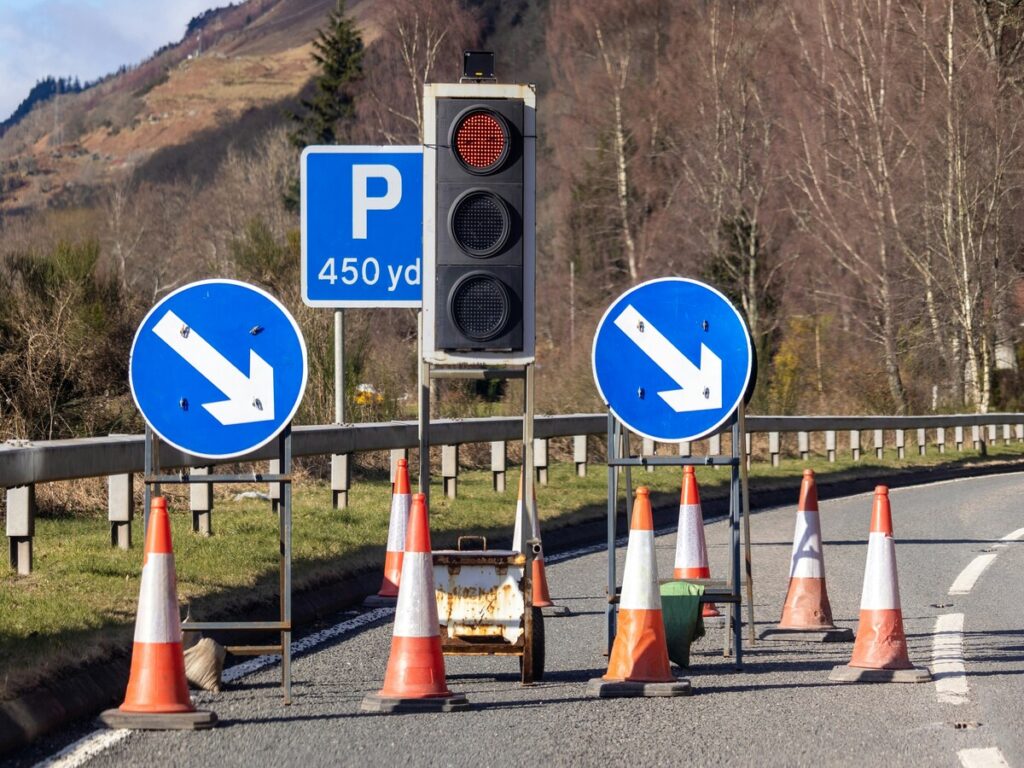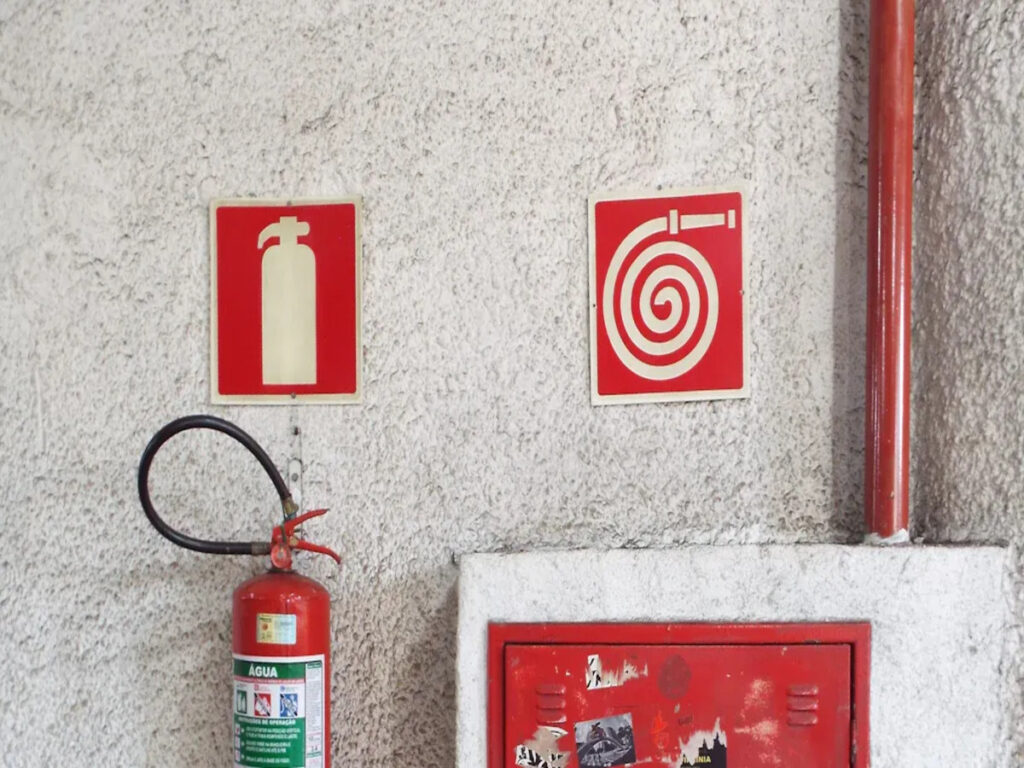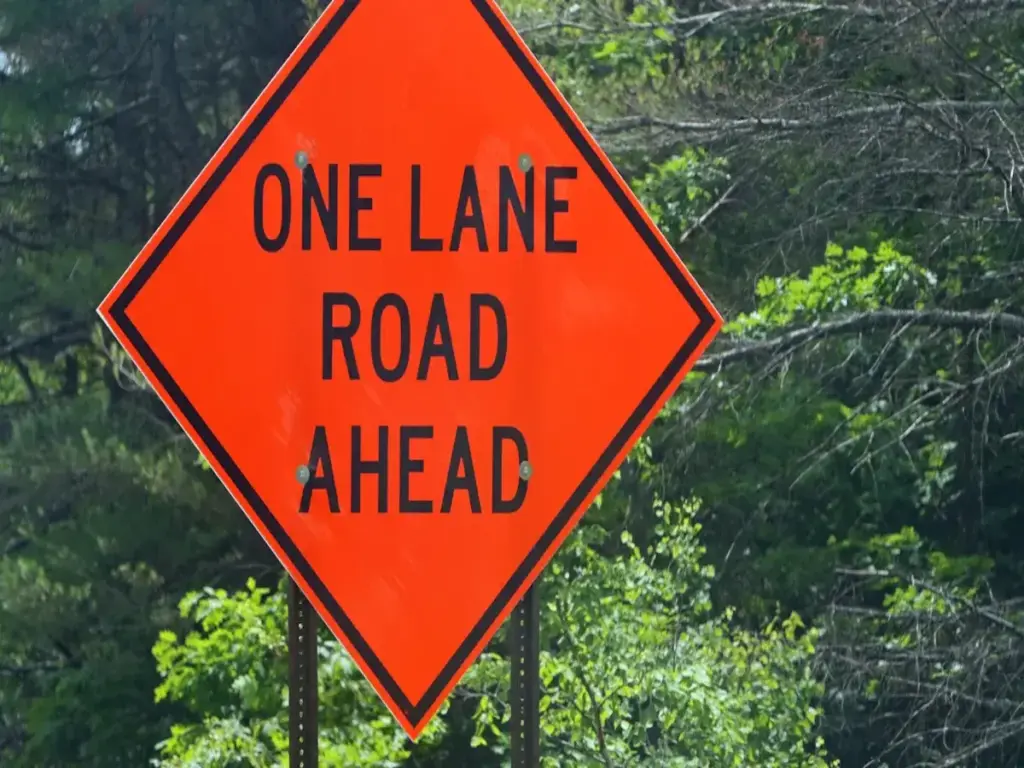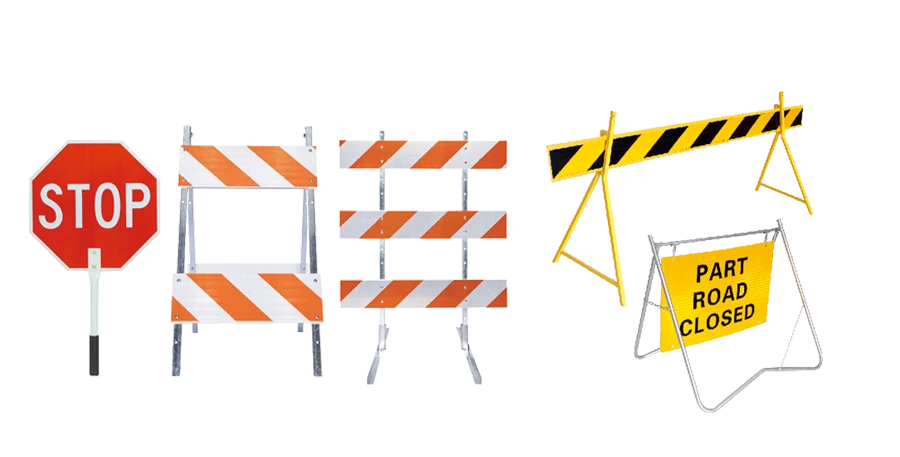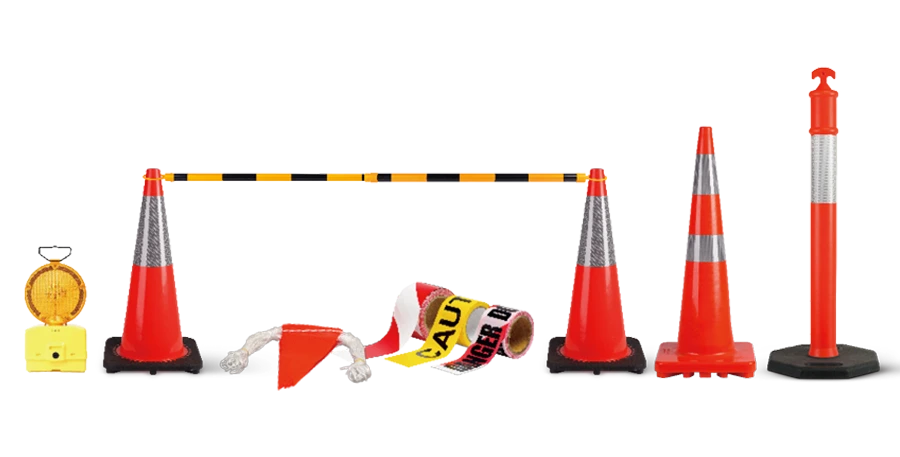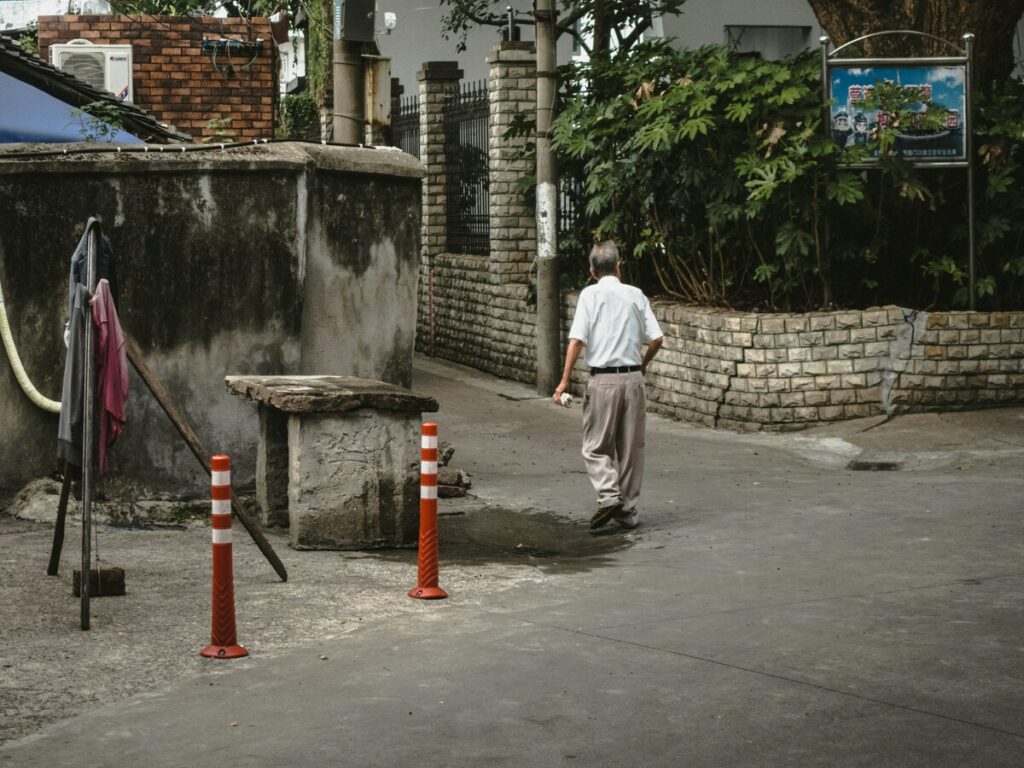
Verkehrszahlen spielen eine wichtige Rolle bei der Sicherheit und Organisation von Straßen. Sie sehen sie auf Autobahnen, Bauzonen, und andere Bereiche, in denen eine klare Anleitung unerlässlich ist. Flexible Verkehrsgrößen verbessern die Sicherheit durch Absorption von Fahrzeugauswirkungen und Reduzierung von Verletzungen. Ihre reflektierenden Oberflächen verbessern die Sichtbarkeit bei schwachem Licht, Sicherstellen, dass die Fahrer auf dem richtigen Weg bleiben. Jedoch, Die Bekämpfung von hartem Wetter kann ihre Leistung im Laufe der Zeit beeinträchtigen. Regelmäßige Inspektion trägt zur Aufrechterhaltung ihrer Stabilität und Effektivität bei, Sicherstellen, dass sie Sicherheitsstandards entsprechen. Durch Priorisierung der Wartung, Sie können ihre Lebensdauer verlängern und Straßen für alle sicherer halten.
OPTsigns Verkehrsleitschilder werden mit Vorsicht von Haltbarkeit und Sichtbarkeit entwickelt. Entwickelt, um rauen Wetterbedingungen und starker Beanspruchung standzuhalten, OPTsigns Leitpfosten bieten zuverlässige Orientierung in allen Umgebungen. Ihre hochwertigen reflektierenden Oberflächen sorgen für maximale Sichtbarkeit, auch bei schlechten Lichtverhältnissen.
Regelmäßige Inspektionen für Verkehrsleitschilder
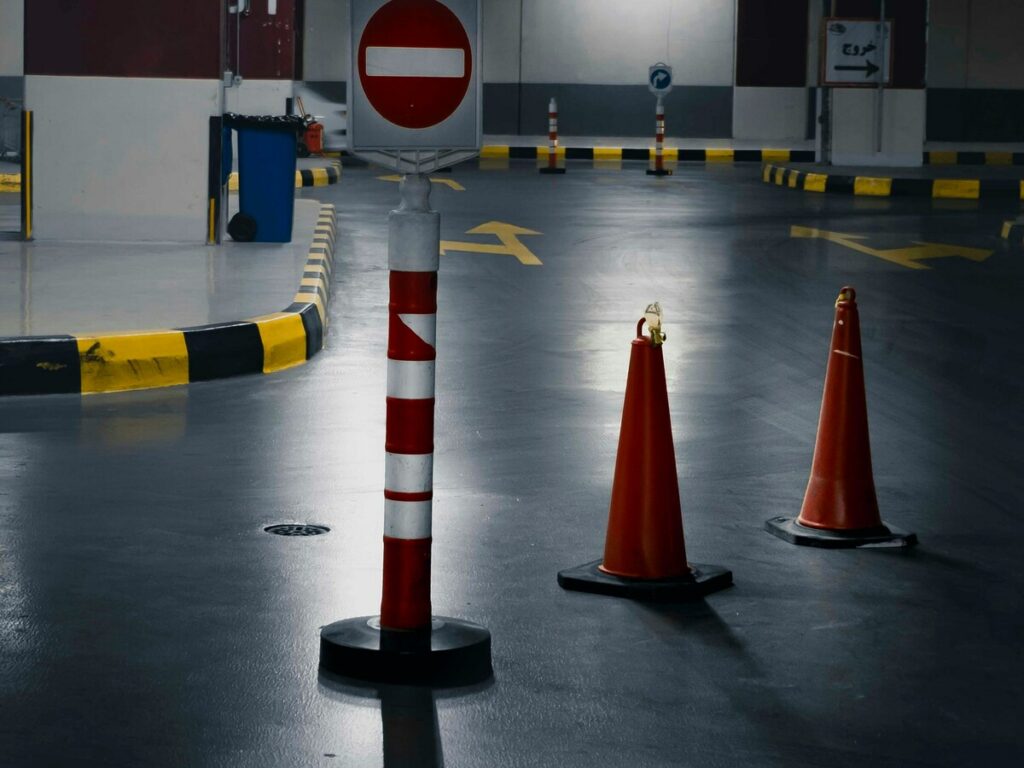
Zu prüfende Schlüsselbereiche
Stabilität und ordnungsgemäße Installation
Sie sollten zunächst die Stabilität der Verkehrsleitlinien überprüfen. Stellen Sie sicher, dass sie sicher am Boden befestigt sind und nicht kippen oder wackeln. Lockere oder falsch installierte Leitpfosten können den Fahrern möglicherweise keine effektive Führung bieten, insbesondere in Hochgeschwindigkeitszonen. Achten Sie auf die Befestigungsmechanismen und Stützstrukturen. Diese Komponenten müssen intakt bleiben, um Umweltbelastungen und Fahrzeugstößen standzuhalten.
Sichtbarkeit und Wirksamkeit reflektierender Oberflächen
Die reflektierenden Oberflächen an Leitpfosten sind entscheidend für die Sichtbarkeit, besonders nachts oder während unerwünschtes Wetter. Überprüfen Sie diese Oberflächen auf Ausbleichen, Peeling, oder Schmutzablagerungen. Prismatische reflektierende Bänder sind aufgrund ihrer höheren Helligkeit im Vergleich zu Glasperlenbändern ideal für Hochgeschwindigkeitsbereiche. Wenn das reflektierende Material abgenutzt erscheint, Ersetzen Sie es umgehend, um die Sicherheitsstandards aufrechtzuerhalten.
Anzeichen von physischer Beschädigung oder Abnutzung
Suchen Sie nach Rissen, Dellen, oder andere Anzeichen von körperlicher Schaden. Kollisionen oder raues Wetter können die Leitpfosten mit der Zeit schwächen. Beschädigte Geräte sollten sofort repariert oder ausgetauscht werden, um eine weitere Verschlechterung zu verhindern. Eine regelmäßige Überprüfung auf Verschleiß stellt sicher, dass die Leitpfosten funktionsfähig und zuverlässig bleiben.
Inspektionshäufigkeit
Saisonale und jährliche Inspektionszyklen
Planen Sie Inspektionen auf saisonaler und jährlicher Basis. Saisonale Kontrollen helfen Ihnen bei der Bewältigung wetterbedingter Probleme, wie Schnee- oder Hitzeschäden. Jährliche Inspektionen ermöglichen eine umfassende Überprüfung der Leitpfosten’ Gesamtzustand. Dieser Zeitplan gewährleistet eine gleichbleibende Leistung das ganze Jahr über.
Anpassen der Frequenz an starkes Verkehrsaufkommen oder schwierige Bedingungen
In stark frequentierten Bereichen oder Regionen mit extremem Wetter, die Häufigkeit der Inspektionen erhöhen. Schwerer Fahrzeugeinsatz oder raue Bedingungen können den Verschleiß beschleunigen. Durch regelmäßige Kontrollen können Sie Probleme erkennen und beheben, bevor sie die Sicherheit gefährden.
Werkzeuge und Techniken
Visuelle und manuelle Inspektionsmethoden
Verwenden Sie visuelle und manuelle Methoden, um den Zustand von Leitpfosten zu beurteilen. Gehen Sie den Installationsort entlang und überprüfen Sie jede Einheit auf Stabilität, Sichtweite, und Schaden. Testen Sie die Befestigungsmechanismen manuell, um sicherzustellen, dass sie sicher bleiben.
Erweiterte Tools für Reflexions- und Strukturbewertungen
Für eine detailliertere Inspektion, Ziehen Sie erweiterte Tools in Betracht. Geräte zur Messung des Reflexionsvermögens können Ihnen dabei helfen, die Wirksamkeit reflektierender Oberflächen zu bewerten. Mithilfe struktureller Bewertungstools können interne Schäden erkannt werden, die mit bloßem Auge möglicherweise nicht sichtbar sind. Diese Tools verbessern die Genauigkeit Ihrer Inspektionen und helfen Ihnen, hohe Sicherheitsstandards einzuhalten.
Reinigungs- und Wartungspraktiken
Reinigung für maximale Sicht
Schmutz entfernen, Schmutz, und Trümmer
Durch die Sauberkeit der Verkehrsleitschilder wird sichergestellt, dass sie für die Fahrer sichtbar bleiben. Schmutz, Schmutz, und auf ihren Oberflächen können sich Ablagerungen ansammeln, insbesondere in Gebieten mit starkem Verkehr oder Bautätigkeit. Entfernen Sie losen Schmutz mit einer weichen Bürste oder einem Tuch. Für hartnäckigen Schmutz, Tragen Sie ein mildes, mit Wasser vermischtes Reinigungsmittel auf. Vermeiden Sie die Verwendung von Schleifwerkzeugen, die die Oberfläche beschädigen könnten. Regelmäßige Reinigung verhindert Ablagerungen und pflegt die Leitpfosten’ Wirksamkeit.
Reflektierende Oberflächen sicher reinigen
Reflektierende Oberflächen sind für die Sichtbarkeit unerlässlich, Besonders nachts. Zur Reinigung dieser Oberflächen, Verwenden Sie einen nicht scheuernden Reiniger und ein Mikrofasertuch. Wischen Sie das reflektierende Material vorsichtig ab, um Kratzer zu vermeiden. Vermeiden Sie aggressive Chemikalien, die das Reflexionsvermögen beeinträchtigen könnten. Regelmäßige Reinigung dieser Oberflächen sorgt dafür, dass sie strahlend und effektiv bleiben, Verbesserung der Verkehrssicherheit.
Reparieren und Ersetzen von Komponenten
Lose oder falsch ausgerichtete Leitpfosten reparieren
Lockere oder falsch ausgerichtete Leitpfosten können den Fahrer möglicherweise nicht effektiv leiten. Überprüfen Sie die Basis und die Befestigungsmechanismen auf Anzeichen von Instabilität. Ziehen Sie Bolzen oder Schrauben nach Bedarf fest. Wenn sich der Leitpfosten durch den Aufprall verschoben hat, Positionieren Sie es wieder in seiner ursprünglichen Ausrichtung. Schnelle Reparaturen verhindern weitere Schäden und sorgen dafür, dass die Leitpfosten funktionsfähig bleiben.
Ersetzen abgenutzter oder beschädigter Teile
Wenn Komponenten zu stark beschädigt sind, um repariert zu werden, ein Austausch ist notwendig. Verwenden Sie hochwertige Materialien, um eine lange Lebensdauer zu gewährleisten. In der folgenden Tabelle sind die empfohlenen Materialien zum Ersetzen beschädigter Teile aufgeführt:
| Materialtyp | Beschreibung |
|---|---|
| Flexibles LDPE | Wird für Leitpfosten und Leitkegel verwendet, prallt nach dem Aufprall zurück. |
| Recycelter Gummi | Wird für Basen verwendet, in verschiedenen Ballastgewichten erhältlich. |
| Strapazierfähiges LDPE | Gefunden in gelben Kegeln mit rechteckiger Gummibasis. |
Durch die Auswahl der richtigen Materialien wird sichergestellt, dass die Leitpfosten Umweltbelastungen standhalten und ihre Leistung beibehalten.
Vorbeugende Wartung
Schutzbeschichtungen auftragen
Schutzbeschichtungen schützen Leitpfosten vor witterungsbedingten Schäden. Tragen Sie UV-beständige Beschichtungen auf, um ein Ausbleichen durch Sonnenlicht zu verhindern. Korrosionsschutzbeschichtungen schützen Metallteile vor Rost. Diese Beschichtungen verlängern die Lebensdauer der Leitpfosten und reduzieren die Notwendigkeit häufiger Reparaturen.
Verwendung langlebiger Materialien für eine lange Lebensdauer (Z.B., TPU, Pu)
Langlebige Materialien wie TPU und PU Erhöhen Sie die Langlebigkeit von Verkehrsleitschildern. Diese Materialien sind verschleißfest, Auch unter harten Bedingungen. Wenn Sie sie in Ihre Wartungsstrategie integrieren, reduzieren Sie die Austauschkosten und gewährleisten eine langfristige Zuverlässigkeit. Zusätzlich, Befolgen Sie vorbeugende Strategien wie die richtige Lagerung, regelmäßige Kontrollen, und rotierende Leitpfosten in stark genutzten Bereichen können ihre Nutzbarkeit weiter erweitern.
Für die Spitze: Lagern Sie Leitpfosten bei extremen Wetterbedingungen ordnungsgemäß, um unnötige Schäden zu vermeiden.
Berücksichtigung von Umweltfaktoren
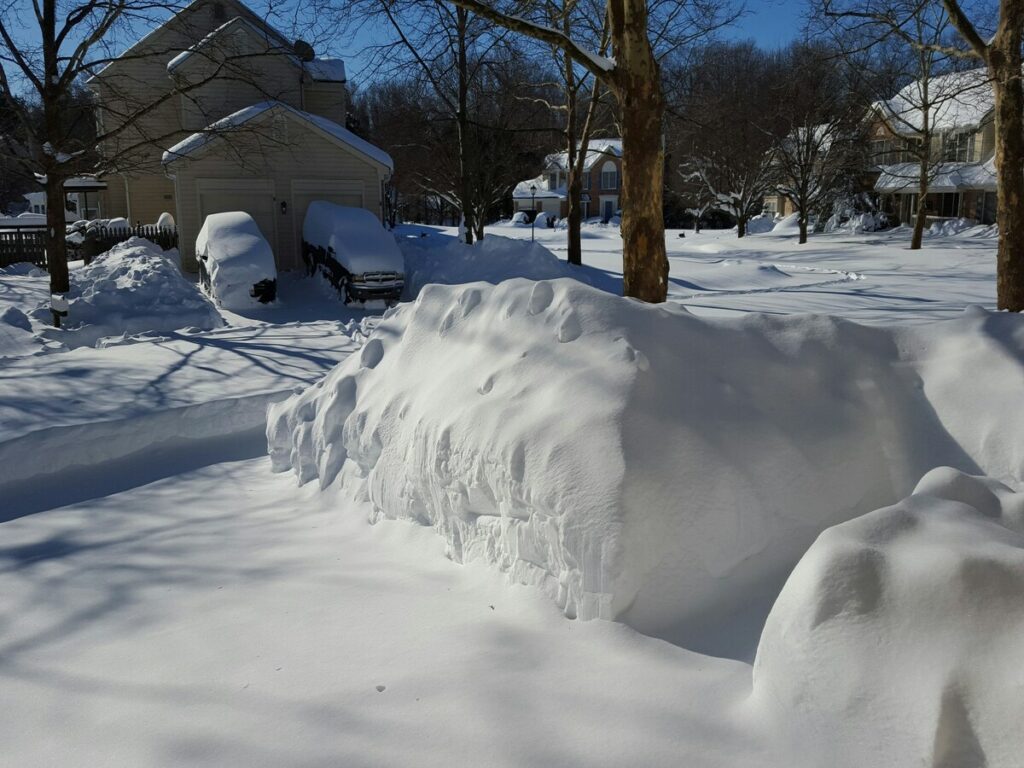
Wetterbedingte Auswirkungen
Schutz vor Korrosion und extremen Temperaturen
Wetterbedingungen können die Leistung von Verkehrskontrollgeräten erheblich beeinträchtigen. Regen, Schnee, und Nebel beeinträchtigen die Sicht, Daher ist es wichtig, dass Leitpfosten unter allen Bedingungen sichtbar bleiben. Tragen Sie Korrosionsschutzbeschichtungen auf Metallteile auf, um Rost durch Feuchtigkeit zu verhindern. Verwenden UV-resistent Materialien zum Schutz vor dem Ausbleichen durch Sonnenlicht. Für Bereiche mit extremen Temperaturen, Wählen Sie Materialien wie TPU oder PU, die Rissen und Verformungen widerstehen. Diese Maßnahmen stellen sicher, dass Ihre Verkehrskontrollgeräte das ganze Jahr über funktionsfähig und langlebig bleiben.
Vorbereitung auf saisonale Veränderungen (Z.B., Schnee, Hitze)
Saisonale Veränderungen erfordern eine proaktive Wartung. Schnee und Eis können die Verkehrsleiteinrichtungen verdecken, ihre Sichtbarkeit verringern. Vor dem Winter, Prüfen Sie die Stabilität der Leitpfosten und tragen Sie Schutzbeschichtungen auf, um Schäden durch eisige Temperaturen zu verhindern. Im Sommer, Hohe Hitze kann Materialien schwächen. Überprüfen Sie regelmäßig, ob Anzeichen von Verformung oder Ausbleichen vorliegen. Durch die Vorbereitung auf saisonale Veränderungen, Sie können die Wirksamkeit Ihrer Verkehrskontrollgeräte aufrechterhalten und die Verkehrssicherheit erhöhen.
Vegetation und Umgebungsbedingungen
Umgang mit überwucherter Vegetation
Bewachsene Vegetation kann Verkehrsleiteinrichtungen behindern, ihre Sichtbarkeit gefährden. Beschneiden Sie die Pflanzen am Straßenrand regelmäßig, um eine freie Sicht für Autofahrer zu gewährleisten, insbesondere an Kreuzungen und Kurven. Verwenden Sie Herbizide, um übermäßiges Wachstum zu bekämpfen und zu verhindern, dass die Vegetation Verkehrsschilder oder Markierungen blockiert. Sorgen Sie für eine ordnungsgemäße Entwässerung rund um die Leitpfosten, um Gefahren wie Schlaglöchern und Überschwemmungen vorzubeugen. Diese Praktiken sorgen dafür, dass Ihre Straßenmarkierungen sichtbar und effektiv sind.
Wurzelschäden an Basen verhindern
Baumwurzeln können die Sockel von Verkehrsleiteinrichtungen beschädigen, was zu Instabilität führt. Untersuchen Sie die Umgebung auf Anzeichen von Wurzelwachstum in der Nähe von Leitpfosten. Entfernen Sie problematische Wurzeln oder versetzen Sie die Leitpfosten bei Bedarf. Auch die Installation von Wurzelsperren kann künftigen Schäden vorbeugen. Die frühzeitige Behebung grundlegender Probleme gewährleistet die Stabilität und Langlebigkeit Ihrer Verkehrskontrollgeräte.
Auswirkungen der vorübergehenden Verkehrskontrolle
Anpassung der Wartung für kurzfristige Installationen
Temporäre Verkehrskontrollen erfordern oft schnelle Anpassungen, um die Sicherheit zu gewährleisten. Verwenden Sie langlebige Verkehrskontrollgeräte, die häufigem Umstellen und Umwelteinflüssen standhalten. Überprüfen Sie diese Geräte regelmäßig bei Veranstaltungen, um sicherzustellen, dass sie funktionsfähig bleiben. Ihre Zuverlässigkeit ist entscheidend für die Verwaltung temporärer Fahrspuren und die effektive Lenkung von Fahrzeugen.
Gewährleistung der Stabilität in temporären Zonen mit hohem Verkehrsaufkommen
In Bereichen mit hohem Verkehrsaufkommen muss besonders auf die Stabilität geachtet werden. Sichern Sie Verkehrsleitgeräte mit beschwerten Standfüßen, um ein Umkippen oder Verrutschen zu verhindern. Prüfen Sie auf Abnutzung durch schwere Fahrzeugnutzung. Regelmäßige Wartung sorgt dafür, dass diese Geräte stabil und sichtbar bleiben, auch unter schwierigen Bedingungen. Zuverlässige Verkehrsleiteinrichtungen sind für die Aufrechterhaltung von Ordnung und Sicherheit in temporären Zonen unerlässlich.
Sicherung flexibler Verkehrsleitschilder vor Diebstahl und Beschädigung
Diebstahlprävention
Verwendung manipulationssicherer Verbindungselemente
Sie können Diebstähle reduzieren, indem Sie manipulationssichere Verschlüsse verwenden. Diese Befestigungselemente erschweren Unbefugten das Entfernen flexibler Verkehrsleitschilder. Wählen Sie Befestigungselemente mit einzigartigem Design oder Spezialwerkzeuge für die Installation. Dieser Ansatz verhindert Diebstahl und stellt sicher, dass die Leitpfosten an Ort und Stelle bleiben, Aufrechterhaltung der Verkehrssicherheit.
Installieren von GPS-Trackern für hochwertige Gegenstände
Für hochwertige flexible Verkehrsleitschilder, Erwägen Sie die Installation von GPS-Trackern. Mit diesen Geräten können Sie den Standort Ihrer Ausrüstung in Echtzeit überwachen. Wenn es zu Diebstahl kommt, Sie können die gestohlenen Gegenstände schnell wiederfinden. GPS-Tracker sind besonders nützlich in Gebieten, in denen es in der Vergangenheit zu Diebstahl oder Vandalismus kam.
Vandalismusschutz
Auftragen von Anti-Graffiti-Beschichtungen
Anti-Graffiti-Beschichtungen schützen flexible Verkehrsleitschilder vor Vandalismus. Diese Beschichtungen erzeugen eine glatte Oberfläche, die das Anhaften von Farbe oder Markern verhindert. Wenn Graffiti auftaucht, Sie können es leicht reinigen, ohne den Leitpfosten zu beschädigen. Diese einfache Maßnahme sorgt dafür, dass Ihre Ausrüstung professionell und funktional aussieht.
Installation einer Überwachung in Hochrisikogebieten
Überwachungskameras verhindern Vandalismus in Risikogebieten. Installieren Sie Kameras in der Nähe von Baustellen oder anderen Orten, an denen häufig flexible Verkehrsleitschilder angegriffen werden. Sichtbare Kameras schrecken potenzielle Vandalen ab und liefern Beweise, wenn es zu Schäden kommt. Dieser proaktive Schritt erhöht die Sicherheit Ihrer Ausrüstung.
Verbesserung der Haltbarkeit
Auswahl von hoher Qualität, Flexible Materialien
Langlebige Materialien verbessern die Lebensdauer flexibler Verkehrsleitschilder. Die folgende Tabelle hebt Materialien hervor, die zu ihrer Festigkeit und Flexibilität beitragen:
| Material | Beitrag zur Haltbarkeit und Langlebigkeit |
|---|---|
| Polyethylen | Bietet hervorragende Flexibilität und Haltbarkeit für den Pfosten. |
| Naturkautschuk | Bietet überragende Widerstandsfähigkeit, Dadurch kann der Leitpfosten nach dem Aufprall wieder aufgerichtet werden. |
| Polycarbonat | Fügt der Gesamtstruktur Stabilität und Stärke hinzu. |
Durch die Verwendung dieser Materialien wird sichergestellt, dass Ihre Leitpfosten Umweltbelastungen und häufigen Stößen standhalten.
Regelmäßige Prüfung auf strukturelle Integrität
Regelmäßige Tests helfen Ihnen, Schwachstellen in flexiblen Verkehrsleitsystemen zu erkennen. Führen Sie manuelle Prüfungen durch, um Stabilität und Flexibilität zu beurteilen. Verwenden Sie fortschrittliche Tools, um interne Schäden zu erkennen, die möglicherweise nicht sichtbar sind. Durch routinemäßige Tests wird sichergestellt, dass Ihre Straßenleitschilder auch im langfristigen Einsatz zuverlässig und sicher bleiben.
Für die Spitze: Kombinieren Sie langlebige Materialien mit regelmäßiger Wartung, um die Lebensdauer Ihrer Leitpfosten zu maximieren.
Die Wartung von Verkehrsleitschildern durch regelmäßige Inspektionen und Reinigung gewährleistet deren Wirksamkeit und Haltbarkeit. Durch die Berücksichtigung von Umweltfaktoren wie Wetter und Vegetation bleiben diese Straßenleitschilder unter allen Bedingungen funktionsfähig. Proaktive Wartung bietet mehrere Vorteile:
- Verbessert die Sichtbarkeit bei Nacht und schlechtem Wetter, Verbesserung der Verkehrssicherheit.
- Reduziert langfristige Kosten durch Minimierung von Austausch und Reparaturen.
- Fördert Nachhaltigkeit mit recycelbaren Materialien und senkt Emissionen durch Leichtbaukonstruktionen.
Temporäre Verkehrssteuerungsgeräte, wenn gut gepflegt, Unterstützen Sie einen sichereren Verkehrsfluss und reduzieren Sie Staus. Die Einführung eines konsistenten Wartungsplans für die vorübergehende Verkehrskontrolle gewährleistet eine zuverlässige Leistung, Verlängerung der Lebensdauer dieser wichtigen Straßenleitmarkierungen.
Für die Spitze: Proaktive Pflege spart nicht nur Kosten, sondern trägt auch zu einer sichereren und umweltfreundlicheren Umwelt bei.



